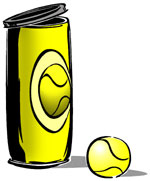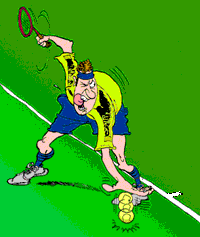| SERVICE Rules to Remember… Excerpts from the USTA Official Rules of Tennis and the USTA Code |
|||
| • The Server shall not serve until the Receiver is ready. If the Receiver attempts to return the service, they will be deemed ready and the point will be scored as played.• May the Server hit the serve just as the Receiver looks up after getting into the ready position? No. The Receiver is not ready until the Receiver is in the ready position AND has a second or two to make eye contact with the Server.• Once ready, can the Receiver become unready? No. The Receiver cannot become unready unless outside interference occurs. |
 |
||
|
|||
| MAKING LINE CALLSTHE SERVE: The Receiver’s Partner should call the service line, and the Receiver should call the sideline and the center service line. Nonetheless, either partner may call a ball that either sees clearly.IN THE MATCH: Opponent gets benefit of doubt. Players are guided by the unwritten law that any doubt must be resolved in favor of the opponent. A player in attempting to be scrupulously honest on line calls frequently will find themselves keeping a ball in play that might have been out or that the player discovers too late was out. Even so, the game is much better played this way. |  |
||
| MAKING CALLS DURING SERVICE…Service calls by serving team. Neither the Server nor Server’s partner shall make a fault call on the first service even if they think it is out because the Receiver may be giving the Server the benefit of the doubt. But the Server and the Server’s partner SHALL CALL OUT any second serve that either clearly sees out.Obvious faults. A player SHALL NOT PUT INTO PLAY or HIT over the net any obvious fault. To do so constitutes rudeness and may even be a form of gamesmanship. |  |
||

